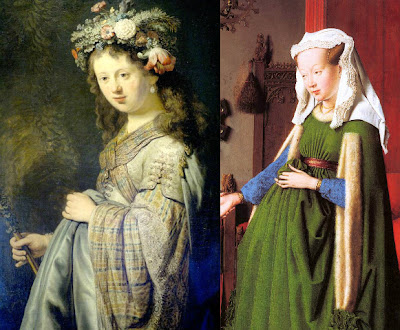The tilted, egg-like shape of the head in the Arnolfini portrait and the rotation of the torso, hand on belly clutching cloth, mirrored closely in Rembrandt's depiction of Flora; the dissected square window top-center in the Chatterton scene known to Wyeth, faced straight-out, beneath the ledge of which is tucked the subject's hip with crescent right arm; the universal pose, hand supporting head from one side (dwelling, not thinking), brow and shoulders set low with a distant, concentrated stare borrowed from Dürer.
First Comparison
Seen here...
Jan van Eyck – "The Arnolfini Portrait" (1434, right)
Second Comparison
Andrew Wyeth – "Overflow" (1978)
Seen here...
Henry Wallis – "The Death of Chatterton" (1856, top)
Third Comparison
Gustave Dore – "Satan" from Dante's Inferno (1861)
Seen here...
Albrecht Dürer – "Melancholia I" (1514, right) ★
[Art Edition] This blog is intended as a space within which I will share my findings related to classical music appropriation. Many composers in the past have quoted, borrowed, and recycled the themes and melodies of others. Having already noted many such instances, I hope to include the more interesting, and convincing, examples herein.



